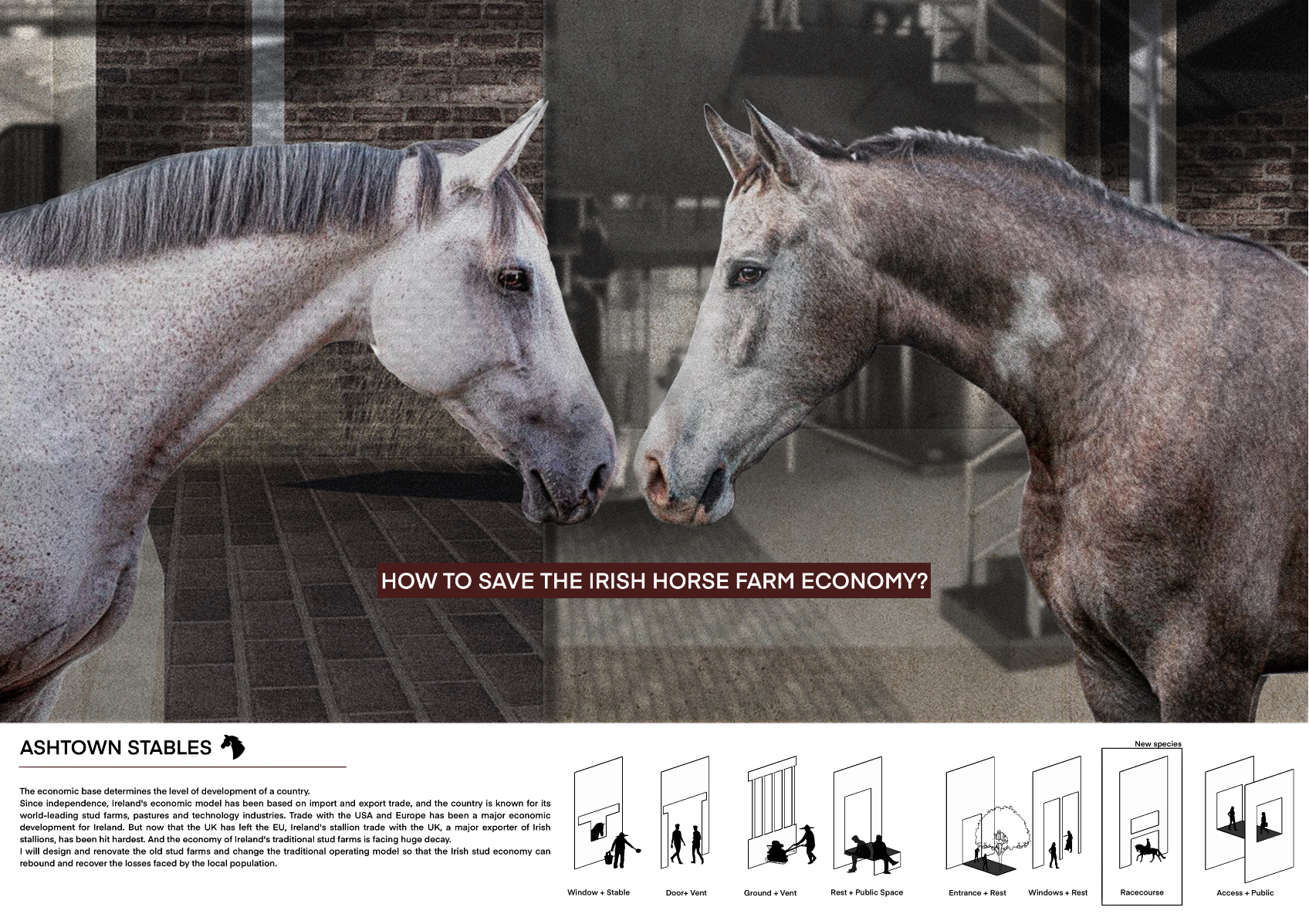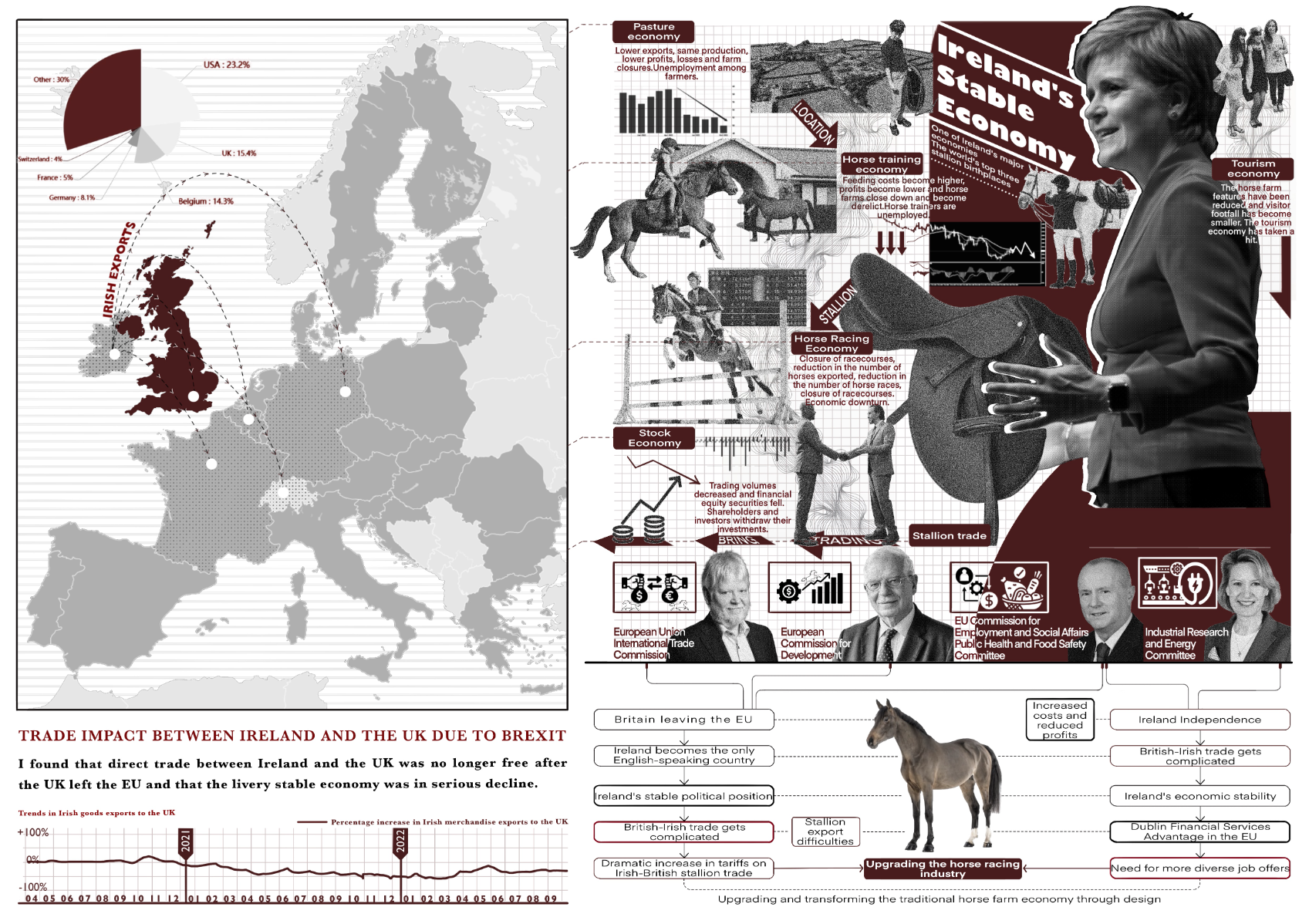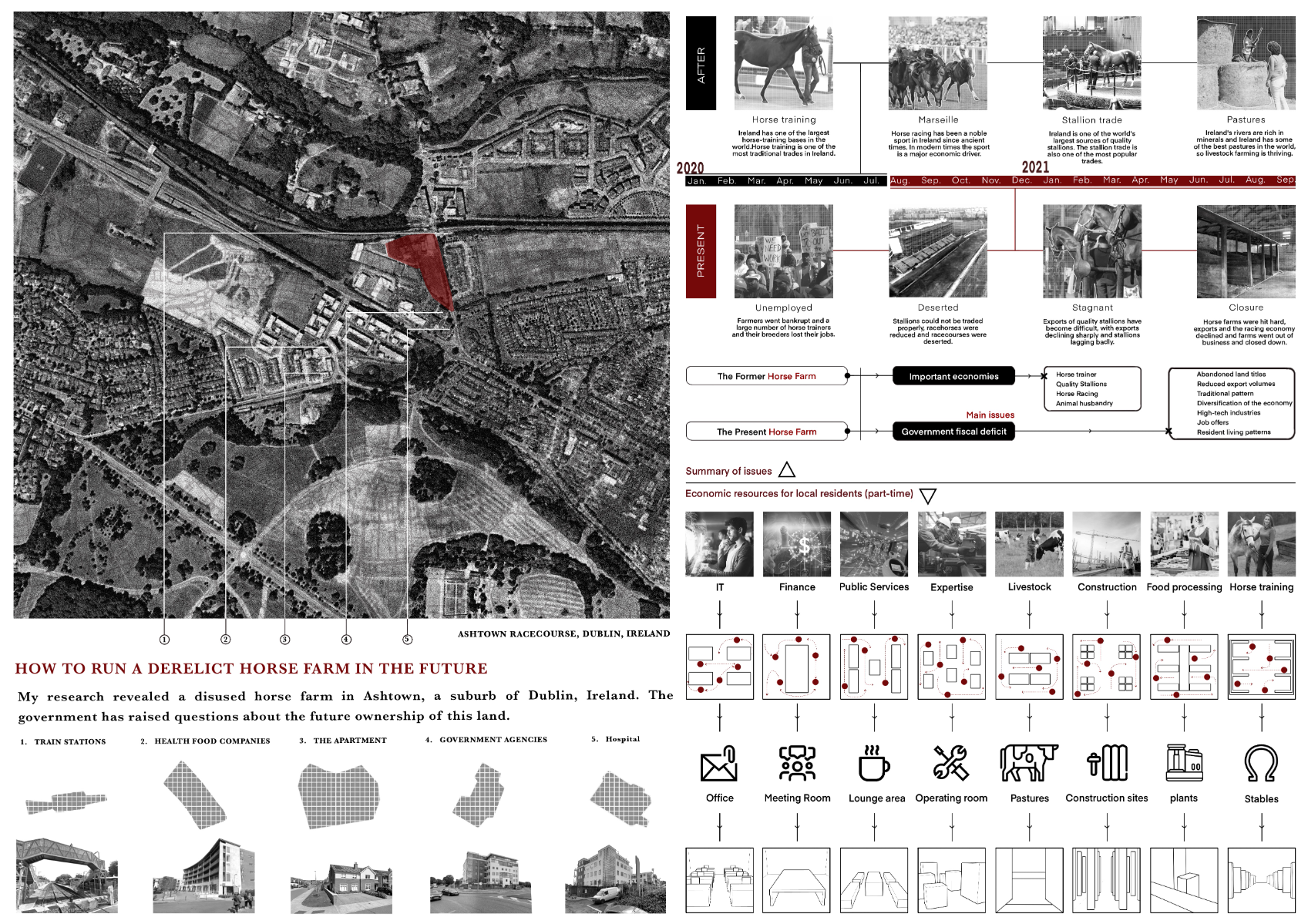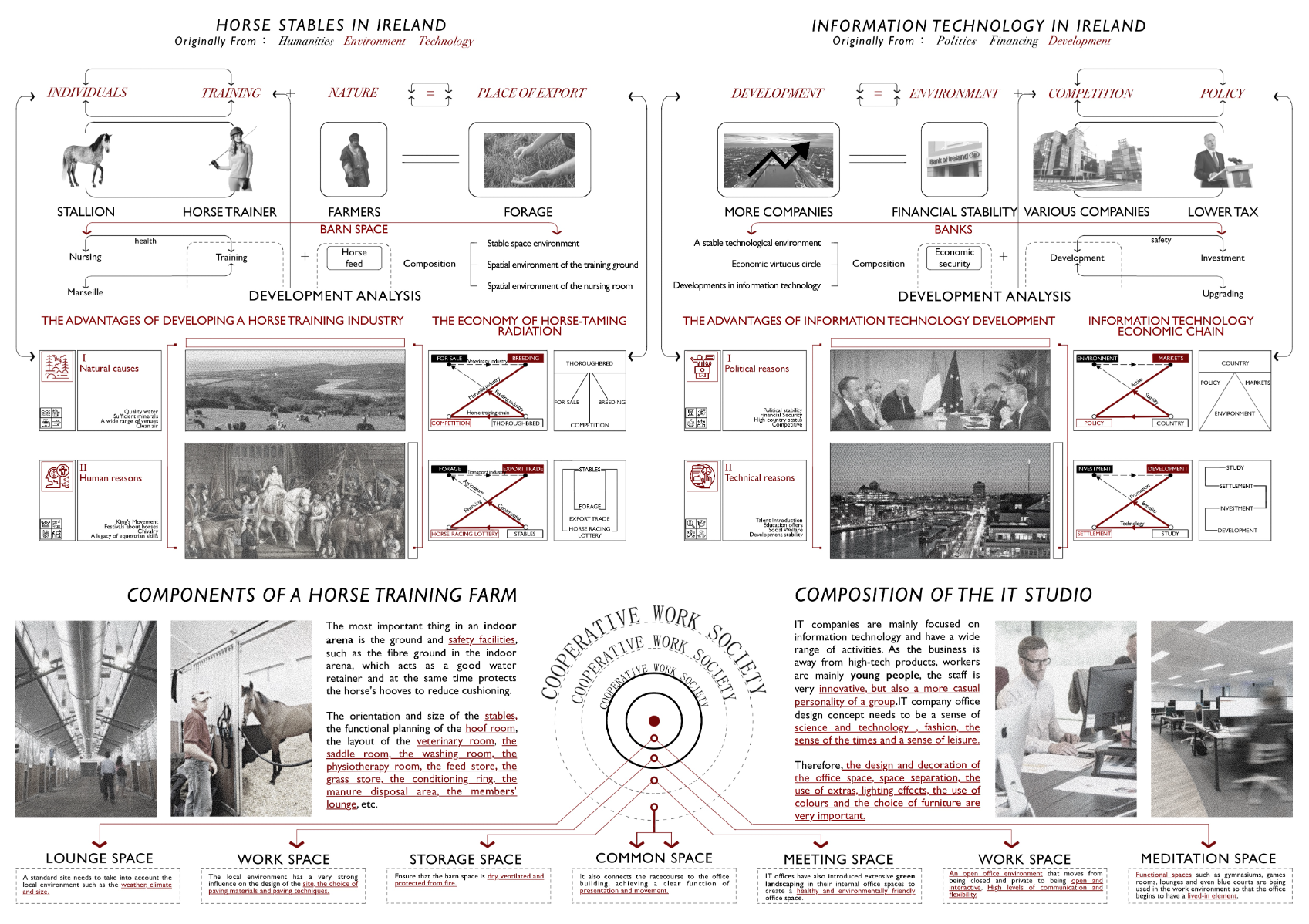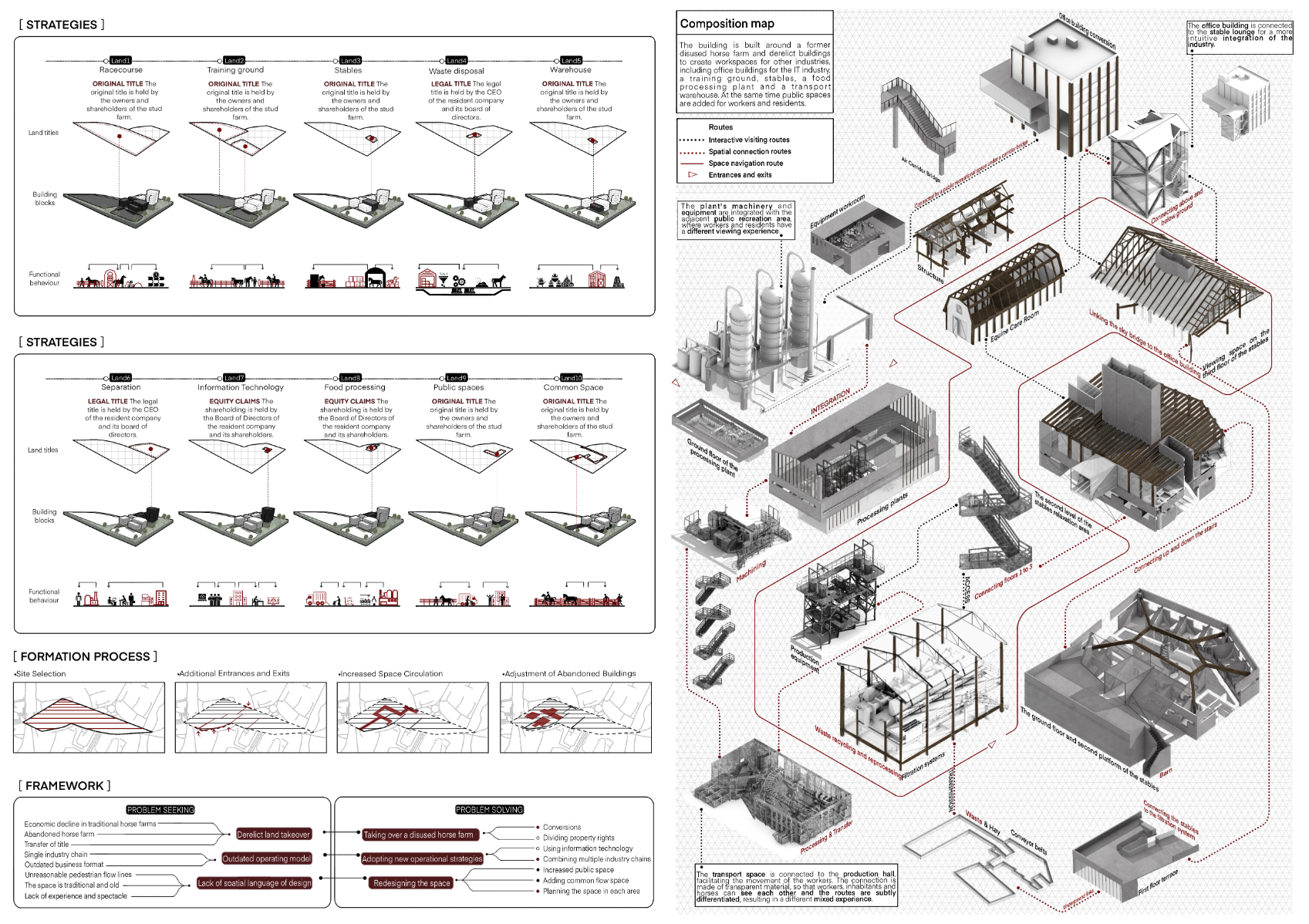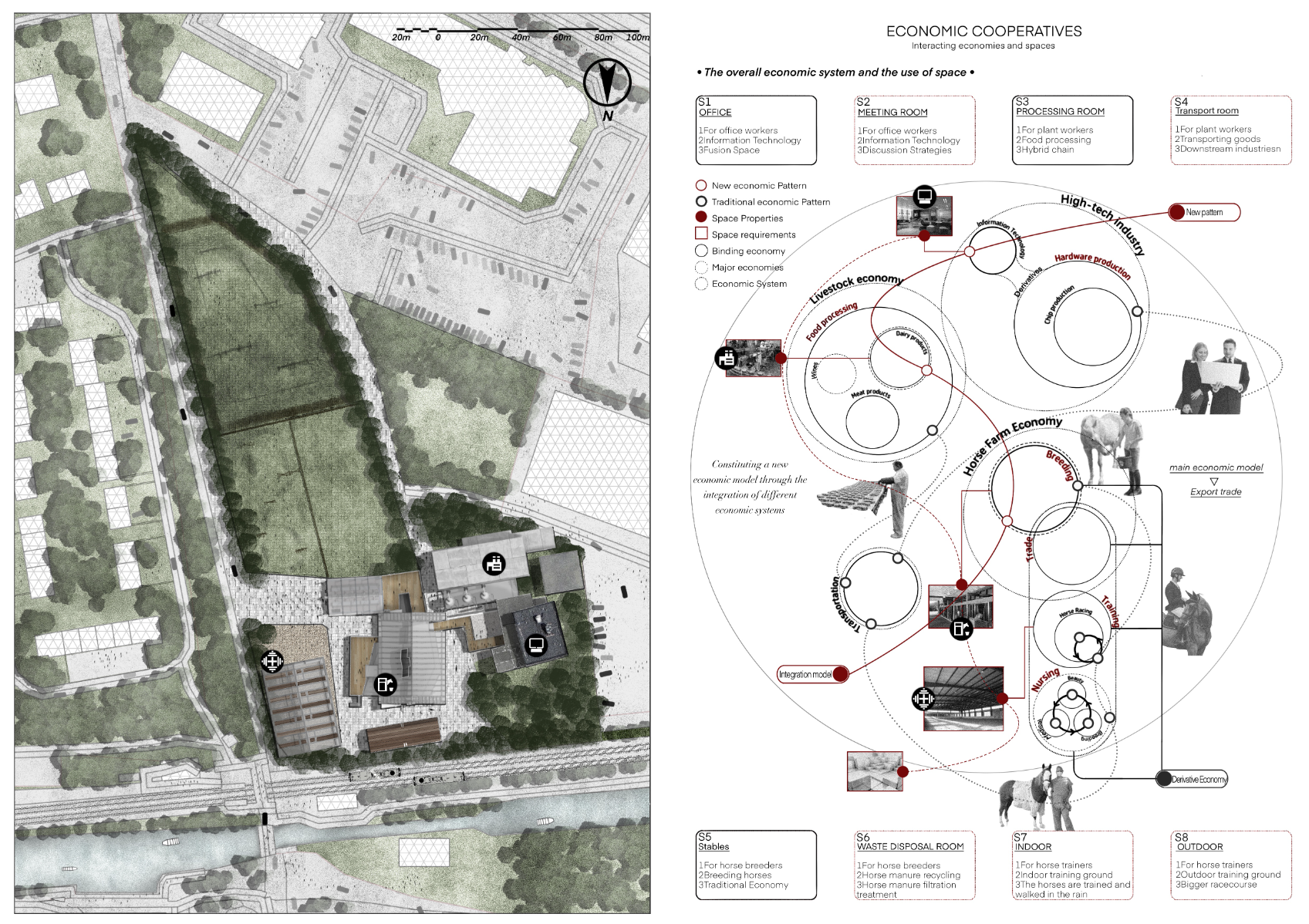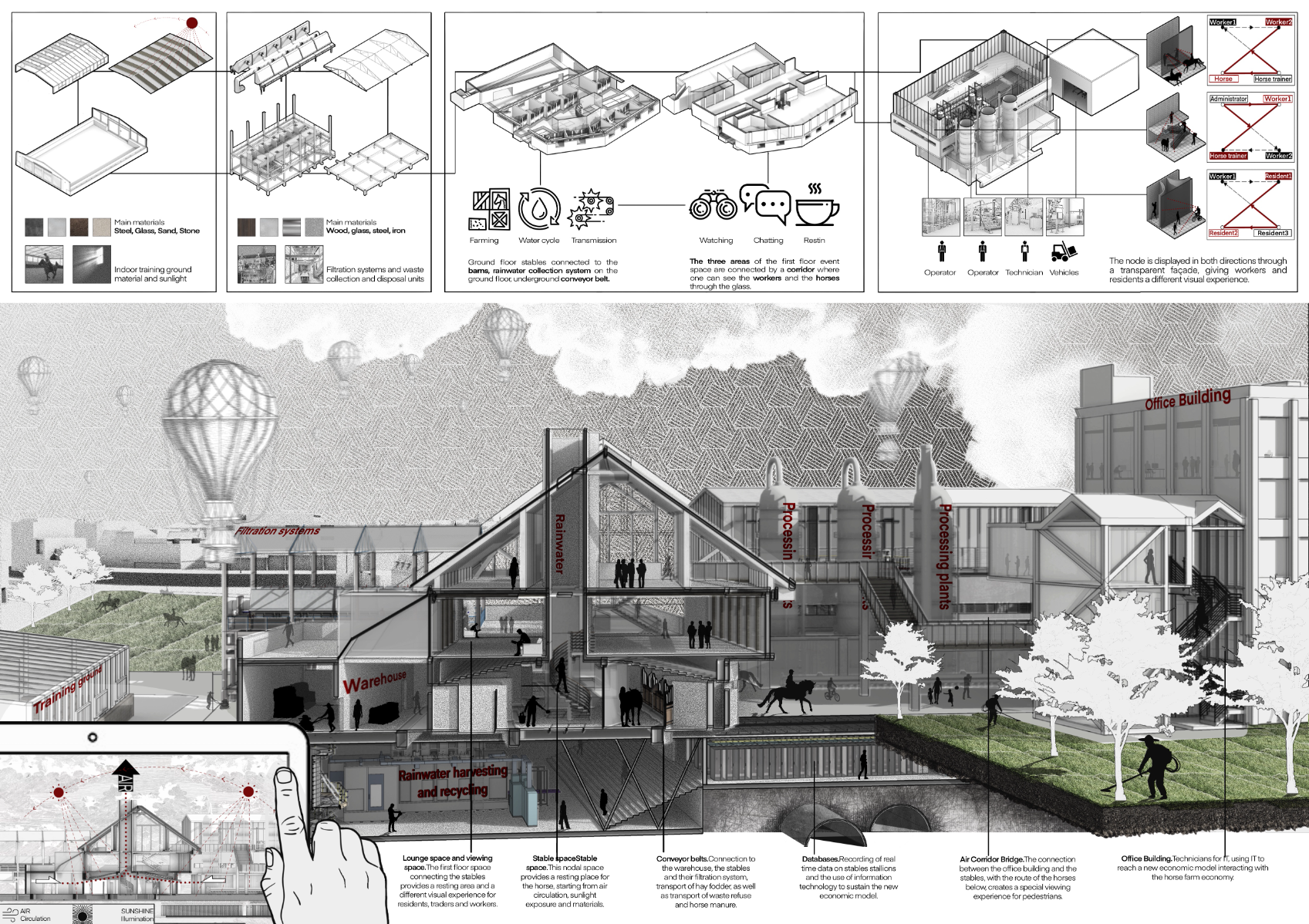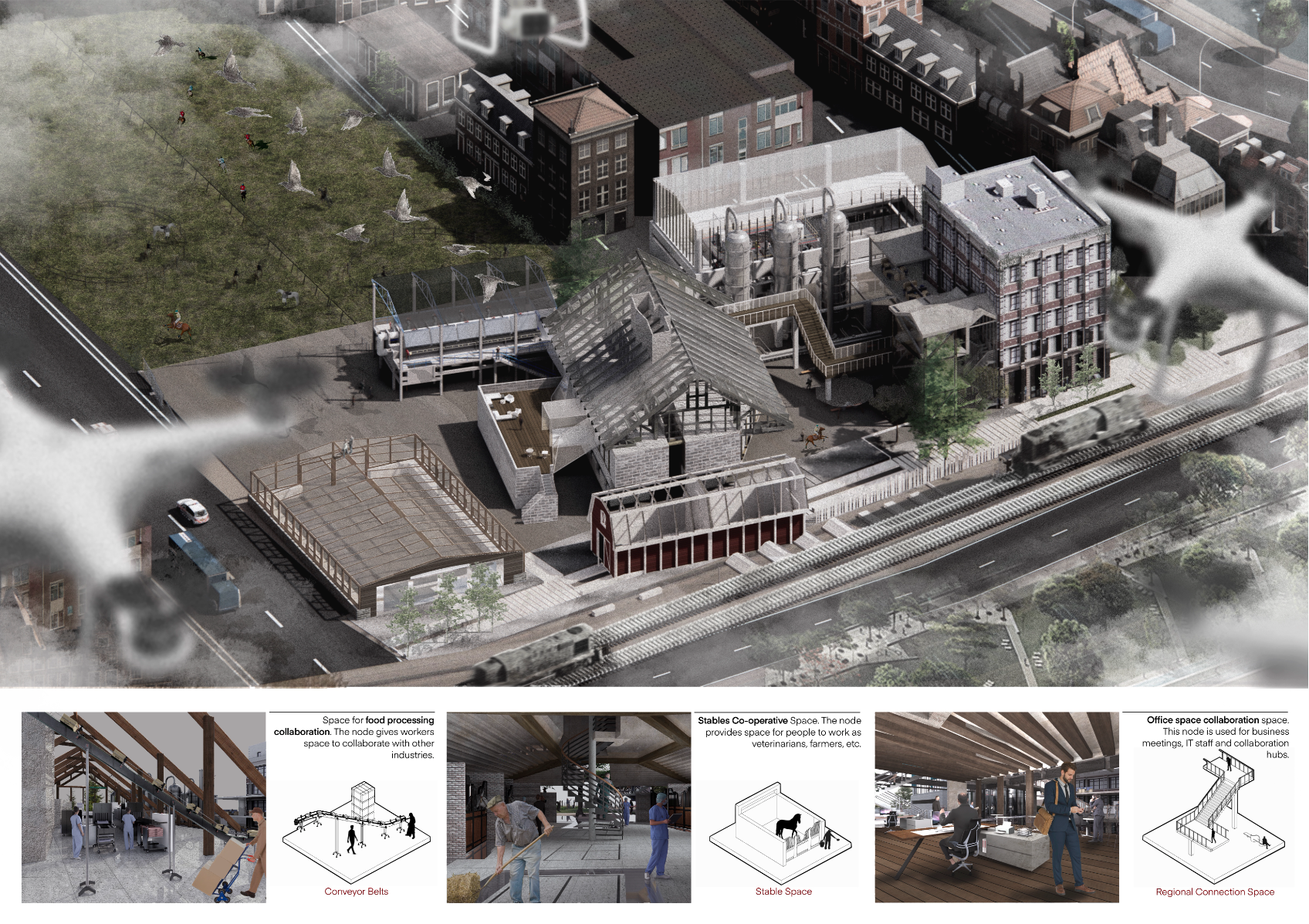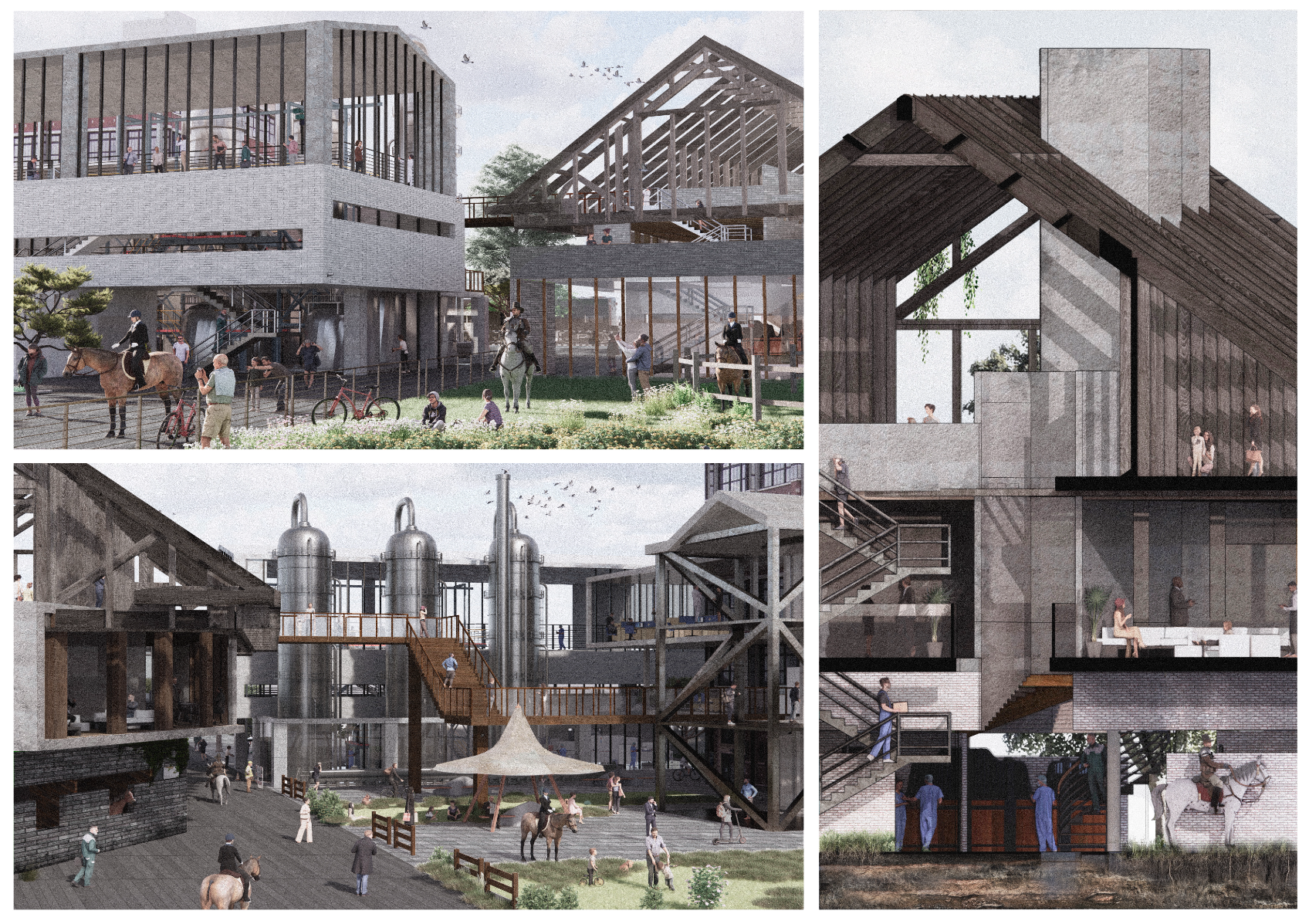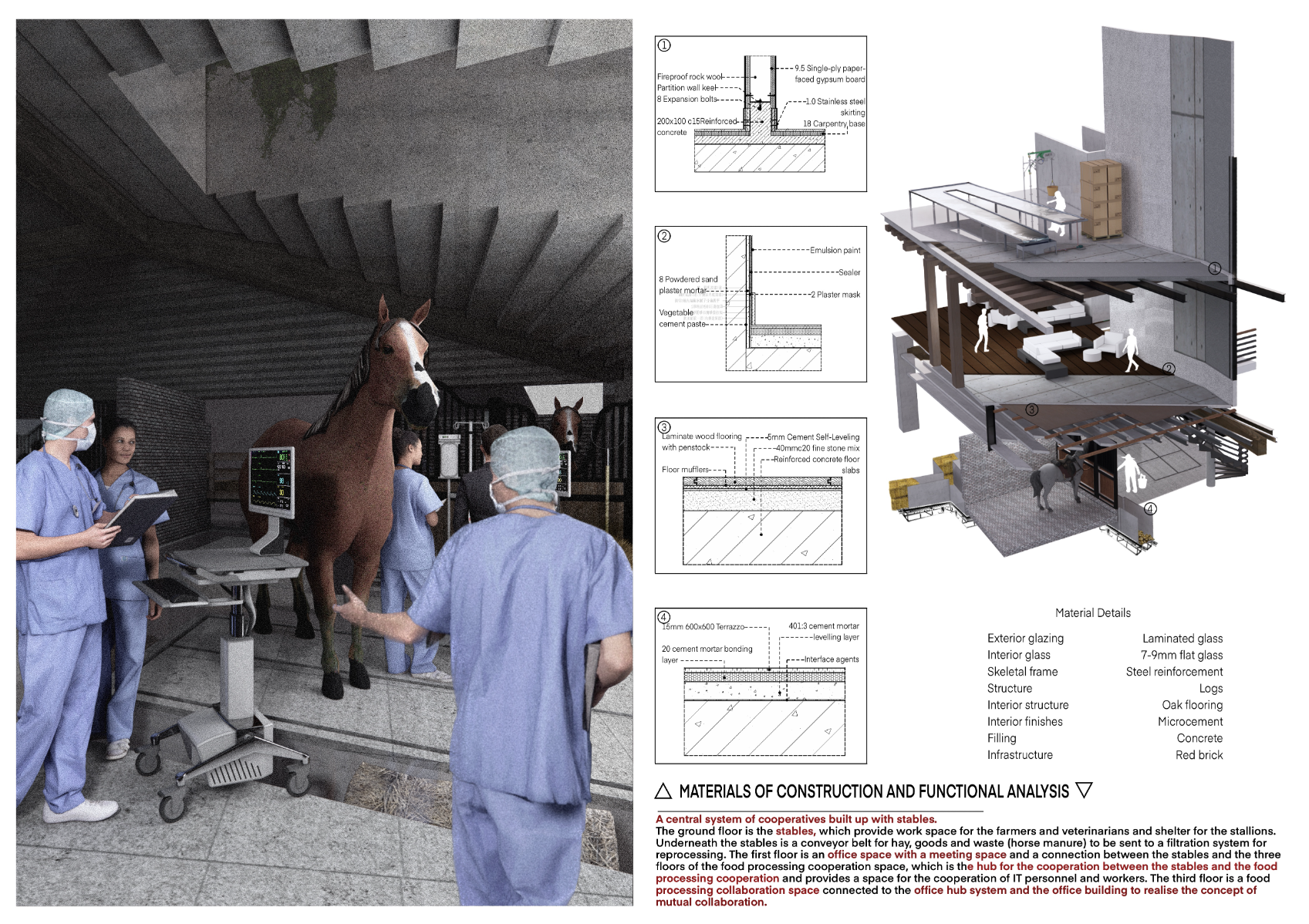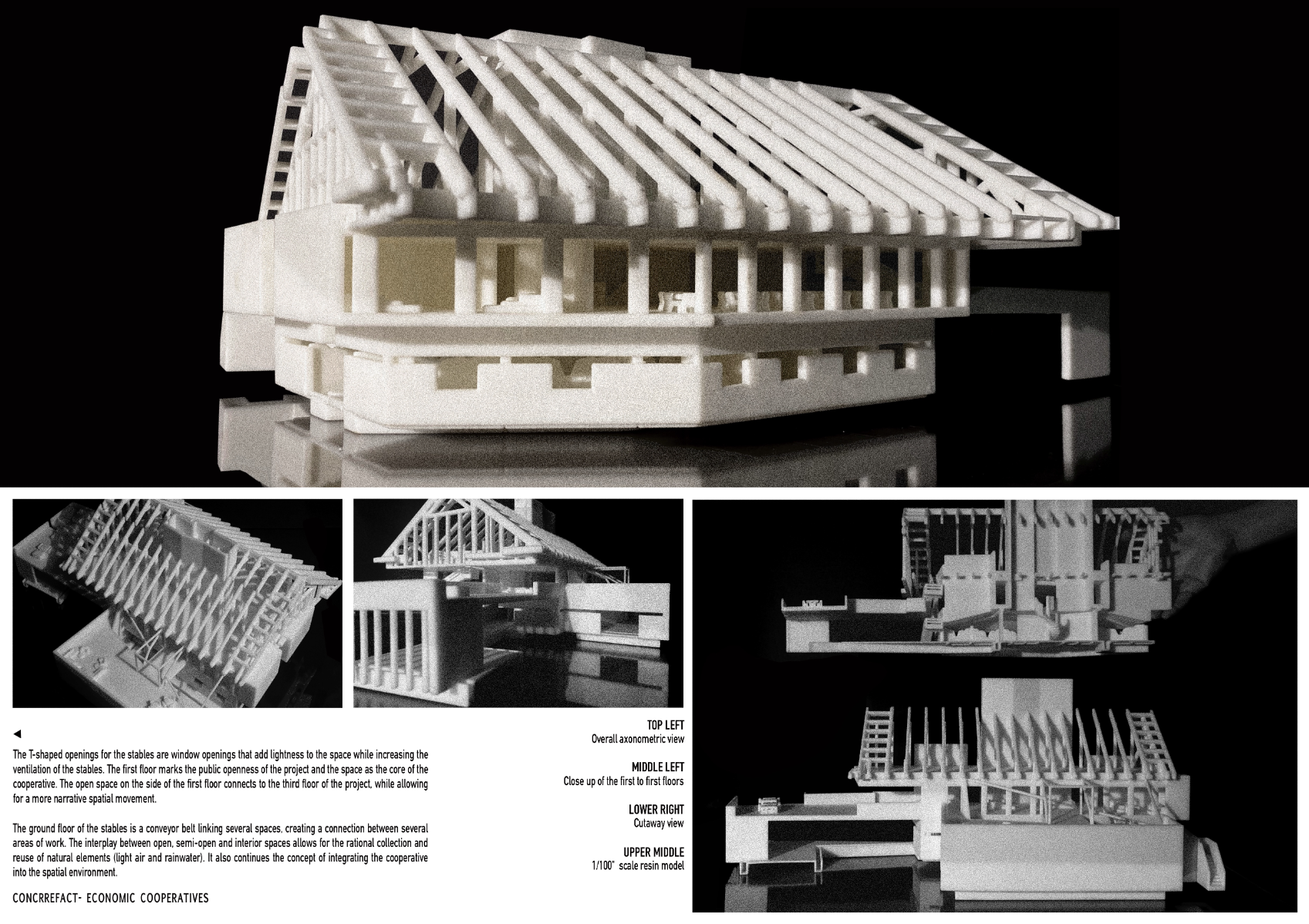Kaixu Jiang
Interior Design MA
Royal College of Art
Graduates: 2024
Specialisms: Interior Design / Design and Technology
My location: London, United Kingdom
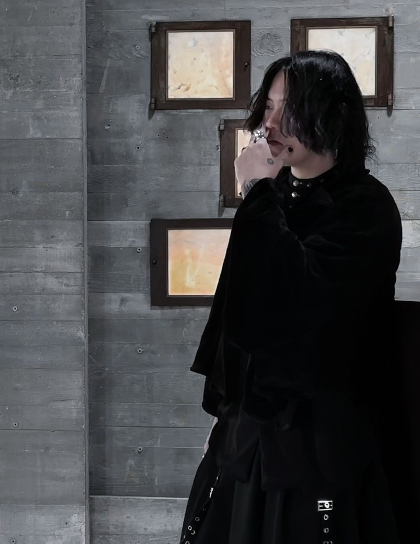

Kaixu Jiang

First Name: Kaixu
Last Name: Jiang
University / College: Royal College of Art
Course / Program: Interior Design MA
Graduates: 2024
Specialisms: Interior Design / Design and Technology
My Location: London, United Kingdom
About
The economic base determines the level of development of a country. Since independence, Ireland's economic model has been based on import and export trade and the country is known for its world-leading stud farms, pastures and technology industries. Trade with the USA and Europe has been a major economic development for Ireland. But now that the UK has left the EU, Ireland's stallion trade with the UK, which is the main exporter of Irish stallions, has been hit hardest. And the economy of Ireland's traditional stud farms is facing a huge decline. I will adopt a new open model for the Irish stud farm economy which is based on a combination of the traditional stud farm industry and information real-time data monitoring and operational technology. The design is based on the goal of improving the local economic environment. The design seeks to balance the deficit in spatial ownership with a new approach for the local area. A way of circulating the 'stock' of space is identified.
Competitions

